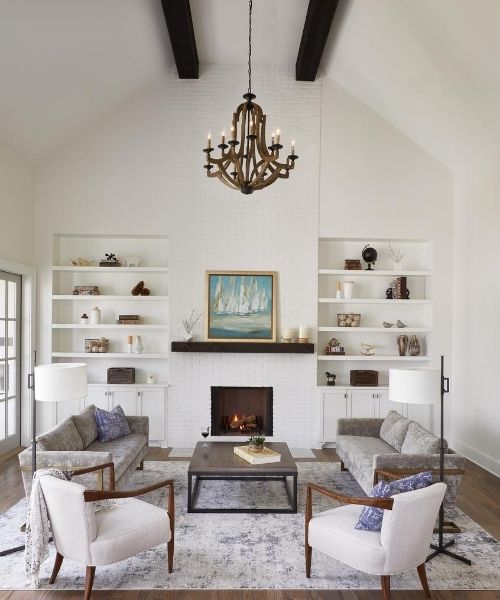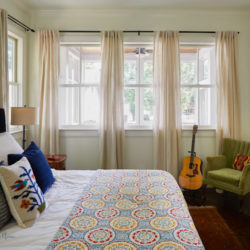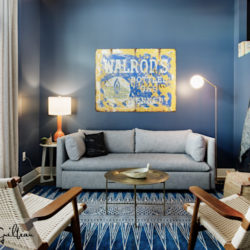
Anyone that has ever worked with me, or spent time reading my blog, knows that a big part of my work is helping clients identify their unique design style, or what I call their Soul Style. I have a process that allows them to get very clear on whether they are traditionalists, modernists, sensualists, or practicalist at heart. (You can learn more about that process here). However, today I am going to discuss an additional design style that is unique and fun, and that can be integrated into all four soul styles — and so enters, eclecticism.
What is Eclecticism exactly?
Let’s begin with a little background…
Eclecticism started around the late 19th century, taking hold first in architecture and then shortly thereafter moved into the Interior design space. Unlike the revivalists of the time, eclecticism was and still is about creating something new by mixing rich elements of the past, textures, styles, and even trends.
As an aside note, if you re a traditionalist, you may be drawn to eclectic design elements because it can bring historical artifacts (or heirlooms) into the design space. However, what is different between traditionalism and eclecticism is the inspiration. Traditionalists aim to preserve history, while eclecticism seeks to create something new with it.


The same can be said of modernists who may be drawn to eclectism when, perhaps, they notice a stand-alone artifact showcased in a home. But, again, if the elements brought in do not together create something new through its mix, then it is not eclecticism.
How to Create an Eclectic Design Space.
Creating an eclectic space happens in the layering process, which begins with the color palette and layout. But, before you start layering, be sure you have established your building blocks and identified your lifestyle. You can learn more about that here.
I have also written substantially about color and on how to choose a palette that you will love in your home. I recommend reviewing it to deepen your understanding of color, their temperatures, and what they evoke.
For inspirational purposes, I suggest gathering a few main pieces that you know for sure you want to incorporate into space. They could serve as a compass for primary or accent colors. After understanding how color moves us, and also considering your inspirational pieces, you will need to feel and trust your color selections.


The layout is the next critical element. Avoid falling into this vortex of random clutter by bringing symmetry and balance to your space. For example, consider distinct items displayed in 2’s or 4’s. What keeps them interesting is their unique aesthetic. But what keeps it deliberate is symmetry. Balance and cohesiveness between furnishings and statement-making extras, even if the finds are from different eras and design movements, will also help avoid creating confusing design mashups. I suggest creating a set limit of exactly how many varied elements feel right in your space to keep them well-layered and yet tight.

Layering Process…
Layering is where the magic happens. Pan across your room, with your furniture in place (and I recommend you loop back to lifestyle for inspiration) If you’ve already selected a few pieces, great!. But what else? If you’re a spiritually inclined individual, your pieces may be inspired by artifact, relics, or literature that speaks to that part of your life’s expression. If you love to entertain, perhaps you’ll opt for items that stir conversations around an appreciation of travels, cocktails, or music. A well designed eclectic home invites many conversations
The things you want to remember is to be consistent. Carry your eclectic design throughout your home, and be mindful not to overdo it. Too much of anyone one thing can become a blur.
Remember above all else, this is your home. Bring in pieces that evoke a cozy and invigorating feeling.
– Marcelle Guilbeau




